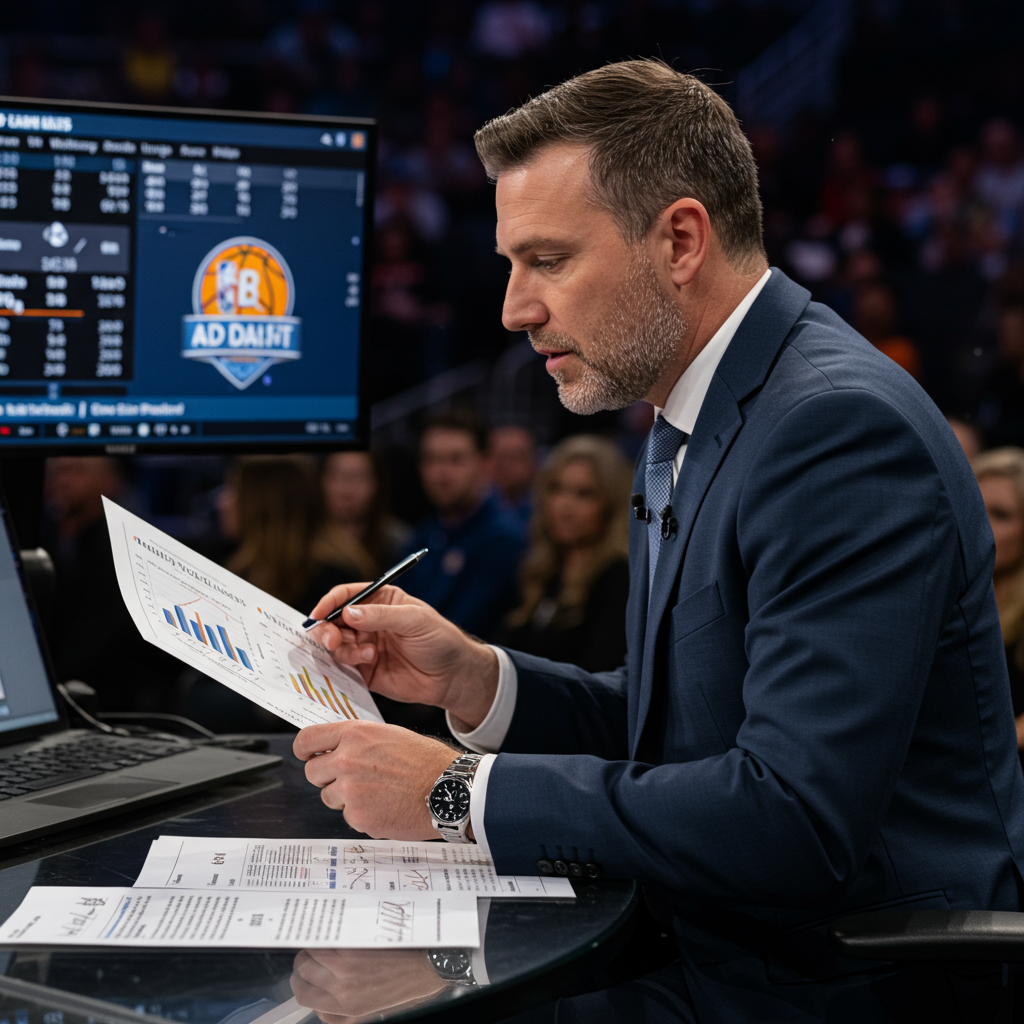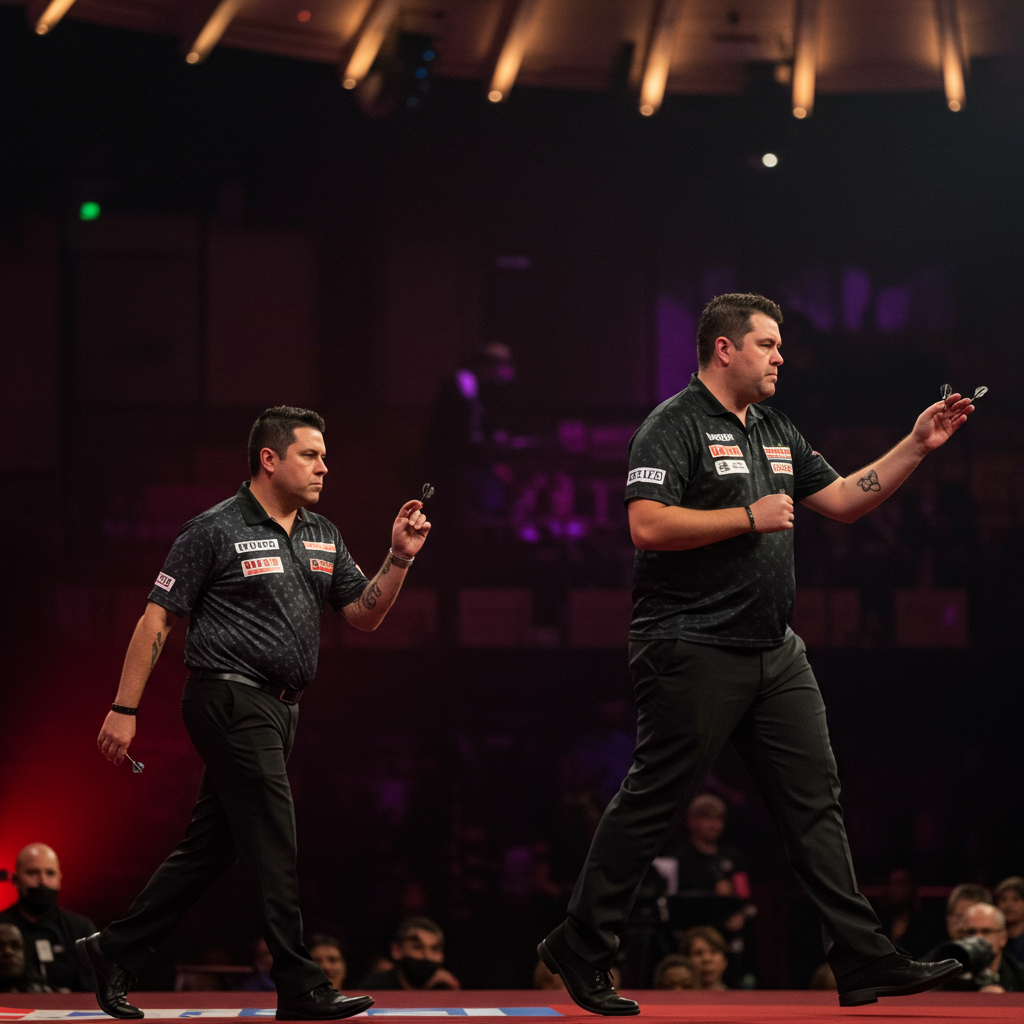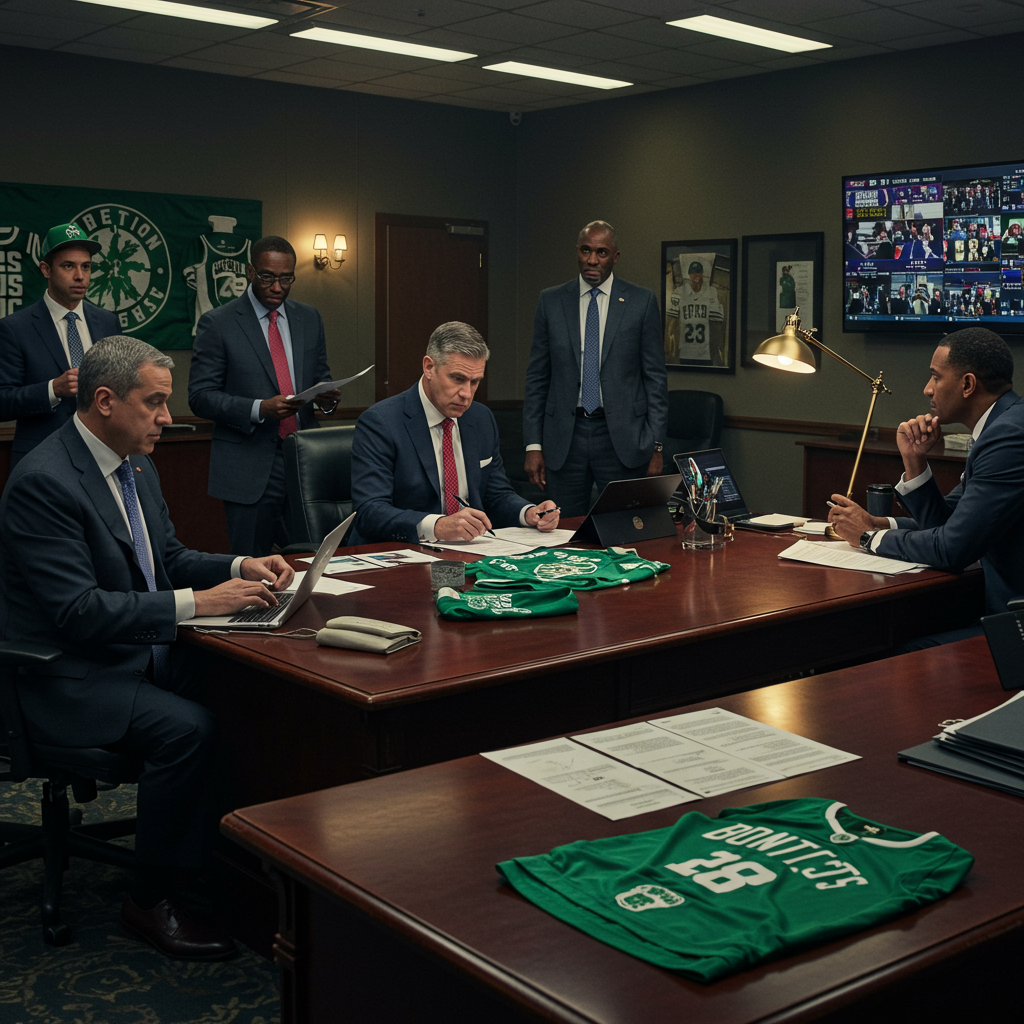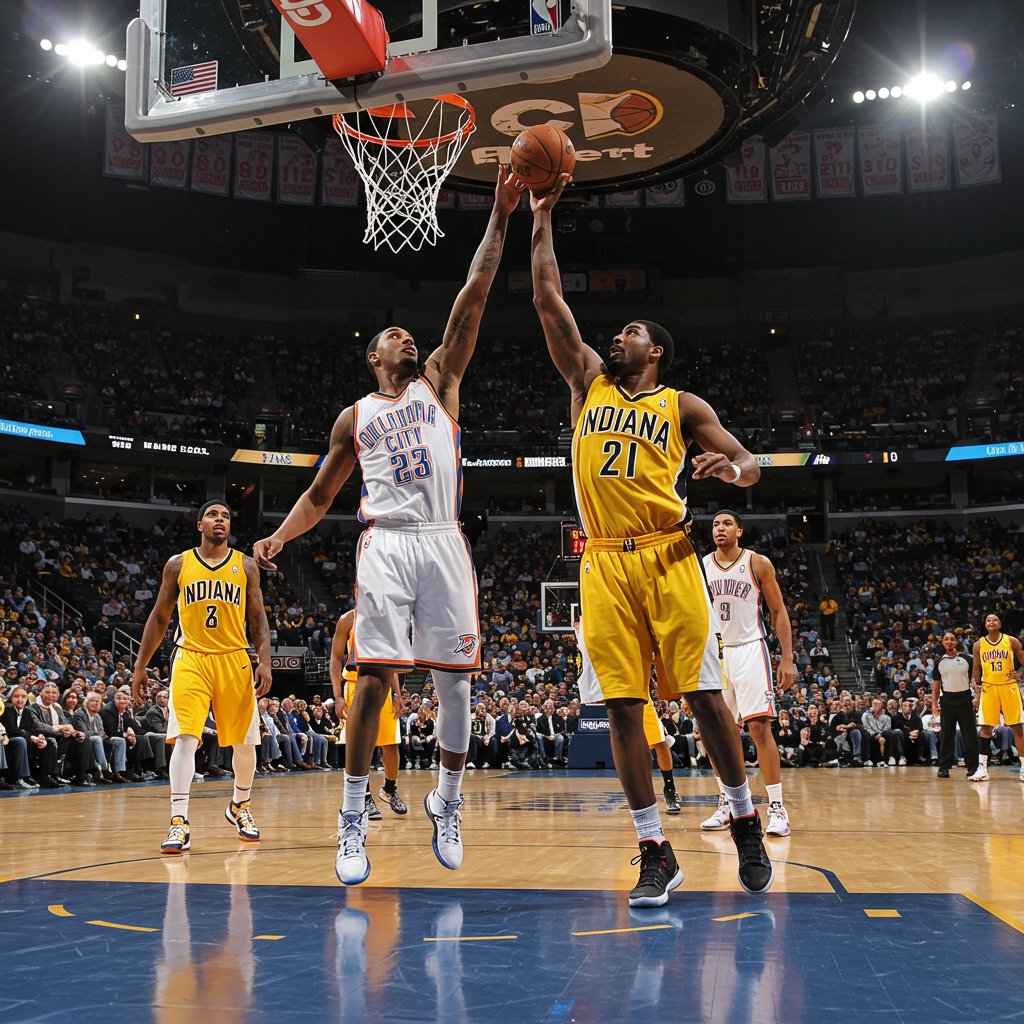The confetti has fallen, the names have been called, and the 2025 NBA Draft is officially in the books. As teams and fans look ahead, the immediate question turns to: How did each franchise fare?
Evaluating a draft class just hours after it concludes is a unique challenge. True success or failure will only be known years from now, shaped by player development, health, and unpredictable circumstances. However, it is possible to analyze the process itself – how teams leveraged their assets, the value of the prospects selected based on pre-draft information and projections, and the fit of those players within the team’s current context and future vision.
This analysis delves into each team’s performance in the 2025 NBA Draft through that specific lens: focusing on the decisions made at the moment the picks were called, rather than predicting future outcomes. It incorporates statistical projections, scouting analysis from league experts, and the strategic impact of draft-night trades.
Grading Every NBA Team’s 2025 Draft Performance
Here’s a look at how all 30 teams performed in the 2025 NBA Draft, graded based on value, fit, and process:
Atlanta Hawks: A
Round 1: Asa Newell (No. 23)
The Hawks made one of the savviest moves of the draft, acquiring an unprotected 2026 first-round pick (the better of Milwaukee’s or New Orleans’) from the Pelicans to move down just 10 spots. Securing that future asset alone nearly guaranteed a top grade. The fact that they were still able to select Asa Newell, a prospect ranked significantly higher (13th) in projections, further solidified their excellent night. Newell’s skills could potentially complement a player like Kristaps Porzingis, addressing some of his limitations despite Newell being a forward/center ‘tweener’ prospect.
Boston Celtics: C+
Round 1: Hugo Gonzalez (No. 28)
Round 2: Amari Williams (No. 46), Max Shulga (No. 57)
Boston’s decision regarding Hugo Gonzalez was curious. While he projected well as a potential ‘stash’ player for future development overseas, indications are the Celtics plan to bring him over immediately. Comparisons to Denver’s Christian Braun are optimistic, particularly given Gonzalez’s significantly lower college 3-point shooting percentage (27%) compared to Braun’s (38%). Amari Williams presents intriguing defensive and facilitating skills but struggles with scoring efficiency inside the arc. Max Shulga, their final pick, offered the best value based on projections due to his strong career 3-point shooting (39%).
Brooklyn Nets: C+
Round 1: Egor Demin (No. 8), Nolan Traore (No. 19), Drake Powell (No. 22), Ben Saraf (No. 26), Danny Wolf (No. 27)
The Nets made history with an unprecedented five first-round selections, earning high marks simply for the strategic accumulation of draft capital via trades. However, the challenge lies in developing such a large volume of young players, many of whom (Demin, Traore) are raw teenagers with overlapping skill sets (playmaking, size, needing shooting improvement). While defensively versatile, spacing could be an issue. This influx of young, developing talent aligns with Brooklyn’s strategic goal of potentially landing in the lottery again in 2026 before their pick conveys to Houston.
Charlotte Hornets: B
Round 1: Kon Knueppel (No. 4), Liam McNeeley (No. 29)
Round 2: Sion James (No. 33), Ryan Kalkbrenner (No. 34)
Ignoring the jokes about their preference for local players, the Hornets landed significant value with Kon Knueppel at fourth overall, a player ranked second in some projections who perfectly addresses their need for a shooting guard. Knueppel’s scoring efficiency at Duke and strong metrics were preferred over similar prospect Tre Johnson. Selecting Liam McNeeley later was a smart move, grabbing a talented player who unexpectedly fell. The pick of Sion James in the second round was less convincing due to his historically low offensive usage. However, Ryan Kalkbrenner offers potential immediate contribution at center following the trade of Mark Williams, provided his pick-and-roll defense translates.
Chicago Bulls: A-
Round 1: Noa Essengue (No. 12)
Round 2: Lachlan Olbrich (No. 55)
The Bulls earned praise for sticking to drafting the best player available in Noa Essengue, a versatile combo forward. His potential fit with previous lottery pick Matas Buzelis is intriguing, offering shared length, athleticism, and potential if their shooting develops. Despite the front office’s resistance to fully rebuilding and bottoming out for higher picks, Chicago consistently drafts young, talented players, and Essengue represents a high-value addition at No. 12.
Cleveland Cavaliers: B
Round 2: Tyrese Proctor (No. 49), Saliou Niang (No. 58)
Entering the draft late on Night 2, Cleveland found an interesting prospect in Tyrese Proctor. He continued to develop after initial hype, showing promise as an on-ball defender and improving his 3-point shot (40.5% last season). His steal rate could still improve. Saliou Niang is a stash pick with longer odds due to significant shooting concerns (26% career 3FG).
Dallas Mavericks: B
Round 1: Cooper Flagg (No. 1)
The Mavericks’ front office didn’t have much room for debate here. Winning the lottery to select consensus No. 1 pick Cooper Flagg was a straightforward decision. The grade here reflects not the luck of winning the lottery, but the sound process of making the obvious and correct pick.
Denver Nuggets: Incomplete
The Nuggets did not control any picks in the 2025 draft and had no opportunity to make selections. Their future draft capital remains limited due to prior trades, resulting in an incomplete grade for this year’s event.
Detroit Pistons: B
Round 2: Chaz Lanier (No. 37)
Following a similar trajectory to fellow Tennessee standout Dalton Knecht, Chaz Lanier emerged as a potent scorer late in his college career. His size and proven 3-point shooting ability (40% career) make him a valuable pick in the second round, potentially offering needed insurance if key free agents like Malik Beasley and Tim Hardaway Jr. aren’t retained.
Golden State Warriors: B
Round 2: Alex Toohey (No. 52), Will Richard (No. 56)
Golden State grabbed two intriguing second-rounders. Alex Toohey‘s shooting is a work in progress (31% in NBL), but his defensive activity and rates for steals and blocks stand out. Will Richard was a high-value pick, ranking well in projections due to his excellent 2-point shooting percentage.
Houston Rockets: Incomplete
The Rockets utilized their draft picks to facilitate the acquisition of superstar Kevin Durant, a trade finalized shortly after the draft. While this means they didn’t make any selections to grade, using assets to land a player of Durant’s caliber earns them a win for the overall outcome of draft night.
Indiana Pacers: A
Round 2: Kam Jones (No. 38), Taelon Peter (No. 54)
Indiana demonstrated strong value picking in the second round for the second consecutive year. Kam Jones, at 23, offers a more immediate potential impact compared to recent draftees, providing needed guard depth especially with Tyrese Haliburton recovering. Taelon Peter, a fascinating swing pick from Division II, possesses outlier shooting efficiency (76% on 2s, 45% on 3s) despite a low assist rate, representing a low-risk, high-reward selection at No. 54.
LA Clippers: C-
Round 1: Yanic Konan Niederhauser (No. 30)
Round 2: Kobe Sanders (No. 50)
While Yanic Konan Niederhauser offers value as a second-round prospect due to his shot-blocking and developing scoring, taking him in the first round at No. 30 is questionable. His profile shows weaknesses in defensive rebounding and ball control. The pick drew comparisons to Daniel Oturu, a previous Clippers draft choice who didn’t pan out. Kobe Sanders is another late bloomer; draft projections often weigh earlier college success more heavily.
Los Angeles Lakers: B+
Round 2: Adou Thiero (No. 36)
The Lakers deserve credit for using cash to move up in the second round to select Adou Thiero. His steal and block rates indicate strong defensive potential. If he can develop a more consistent outside shot (28% career 3FG), he could become a valuable rotation player.
Memphis Grizzlies: C-
Round 1: Cedric Coward (No. 11)
Round 2: Javon Small (No. 48), Jahmai Mashack (No. 59)
Memphis continued its pattern of trading up in the first round, but the value proposition this time was questionable. Giving up an unprotected future first-rounder (acquired in the Desmond Bane trade) to move up five spots for Cedric Coward is debatable, even if Coward ranked well in some projections. Waiting to see if he or a similar prospect like Carter Bryant would fall might have been wiser. In the second round, Javon Small offered good value as an efficient, albeit undersized, scorer. Jahmai Mashack fits a defensive-minded mold but had limited offensive production in college.
Miami Heat: A-
Round 1: Kasparas Jakucionis (No. 20)
Despite some statistical red flags in his college season (low defensive rates, turnovers), Kasparas Jakucionis was considered a top-10 prospect by many earlier in the year. Miami taking him at No. 20 represents significant value and is viewed as a smart overcorrection against some of the later concerns, landing a high-potential player well below his perceived ceiling.
Milwaukee Bucks: B
Round 2: Bogoljub Markovic (No. 47)
A second-round pick at No. 47 isn’t likely to dramatically impact Giannis Antetokounmpo’s future in Milwaukee. Bogoljub Markovic showed scoring efficiency in the Adriatic League (61% 2FG, 37% 3FG) but raises defensive questions due to low steal and block rates. It’s a solid, low-risk pick for a team without high draft capital.
Minnesota Timberwolves: B-
Round 1: Joan Beringer (No. 17)
Round 2: Rocco Zikarsky (No. 45)
The Timberwolves have a clear vision for Joan Beringer as a future rim protector in their system, potentially filling a void as Rudy Gobert ages. While Beringer isn’t expected to replicate Gobert’s unique physical profile or finishing ability, his defensive prowess is a clear fit. Doubling down on this center archetype by selecting the 7-foot-3 Rocco Zikarsky in the second round, who has remarkably similar projections, presents an interesting developmental challenge for the team.
New Orleans Pelicans: F
Round 1: Jeremiah Fears (No. 7), Derik Queen (No. 13)
Round 2: Micah Peavy (No. 40)
The Pelicans’ aggressive trade up to acquire Derik Queen at No. 13, involving a potentially valuable 2026 unprotected first-round pick, was the riskiest move of the draft and resulted in the lowest grade. While trades like this can work (e.g., Suns acquiring Mikal Bridges), the cost was high, especially considering Queen was ranked outside the top 30 in projections compared to Bridges’ top-10 projection. New Orleans taking Jeremiah Fears at No. 7 was a good decision to land a highly-rated prospect, but the overall package of draft picks and trades significantly diminished their value gained. Micah Peavy in the second round, a breakout senior with 3-and-D potential, was a solid pickup, but didn’t offset the first-round process.
New York Knicks: C+
Round 2: Mohamed Diawara (No. 51)
The Knicks made just one selection, taking Mohamed Diawara late in the second round. Diawara is a raw prospect who hasn’t been a significant impact player overseas (averaging under 6 points). He may be better suited as a stash player rather than taking up a valuable roster spot immediately.
Oklahoma City Thunder: B
Round 1: Thomas Sorber (No. 15)
Round 2: Brooks Barnhizer (No. 44)
Oklahoma City’s selection of Thomas Sorber aligns clearly with a need for a center prospect who can pass and defend the rim, potentially serving as a future replacement for a player like Isaiah Hartenstein. The Thunder also smartly managed their draft capital by trading the No. 24 pick to Sacramento for a future protected pick, better fitting their timeline and roster limitations. Brooks Barnhizer, taken on a projected two-way contract, is an inefficient scorer but provides intriguing defensive activity with good rates for steals and blocks.
Orlando Magic: B+
Round 1: Jase Richardson (No. 25)
Round 2: Noah Penda (No. 32)
There’s a nice narrative touch with Jase Richardson heading to one of his father Jason’s former teams. More importantly, taking Richardson at No. 25 represented good value, especially considering he was projected higher before his combine measurements. His production at Michigan State was solid, and Orlando can afford to develop him gradually as they build their core, mindful of the picks spent in the Desmond Bane trade. Trading up for Noah Penda in the second round came at a significant cost (multiple picks), and Penda’s shooting remains a key area for improvement.
Philadelphia 76ers: B+
Round 1: VJ Edgecombe (No. 3)
Round 2: Johni Broome (No. 35)
Although slightly lower than Kon Knueppel in some projections, VJ Edgecombe at No. 3 was still a strong pick. His high steal rate indicates a solid defensive foundation, and his athleticism offers potential as a shot creator. Given Joel Embiid’s injury history, Philadelphia’s timeline may need to adapt, making Edgecombe’s long-term upside appealing. In the second round, Johni Broome, a consensus All-America, could provide immediate help as a more skilled backup center compared to players who struggled in that role last season.
Phoenix Suns: B
Round 1: Khaman Maluach (No. 10)
Round 2: Rasheer Fleming (No. 31), Koby Brea (No. 41)
The Suns addressed their frontcourt needs by selecting Khaman Maluach at No. 10, a top prospect who fell to them, despite also acquiring Mark Williams via trade. Standing pat for Maluach was a logical move. Phoenix was active in the second round, moving up to take Rasheer Fleming, a high-value prospect in some models known for his shot-blocking with added range. Koby Brea adds elite shooting (Grayson Allen trade possibility noted), possessing the highest shooting skill projection in the expert’s database, despite the team’s existing depth at shooting guard.
Portland Trail Blazers: C-
Round 1: Yang Hansen (No. 16)
The selection of Yang Hansen at No. 16 is a high-upside bet on Portland’s ability to evaluate talent differently than the rest of the league, as other teams reportedly valued him lower. While the Blazers did gain a future first-round pick by moving down, their overall trade compared unfavorably to the value the Atlanta Hawks gained in a similar move. Betting on a prospect when the market value is significantly lower presents inherent risk, despite Hansen’s potential All-Star ceiling.
Sacramento Kings: C
Round 1: Nique Clifford (No. 24)
Round 2: Maxime Raynaud (No. 42)
The Kings used assets from previous trades to re-enter the first round, selecting Nique Clifford with protection on the pick to limit downside. Projections were lower on Clifford than scouts primarily because he didn’t emerge as a top prospect until his fifth college season, raising questions about whether his success was due to genuine improvement or an experience advantage that won’t translate. Maxime Raynaud in the second round also had scout grades differing from projections, mainly due to his low block rate for a center. However, Raynaud’s success as a volume 3-point shooter offers an intriguing modern skillset.
San Antonio Spurs: A
Round 1: Dylan Harper (No. 2), Carter Bryant (No. 14)
San Antonio’s draft night began predictably with the easy selection of consensus No. 2 pick Dylan Harper. Their grade is boosted by their second lottery pick. Waiting for Carter Bryant to fall to No. 14 was a high-value move. Bryant is projected as a high-level 3-and-D prospect, making him an ideal complementary piece around primary shot creators like Harper and Victor Wembanyama.
Toronto Raptors: B
Round 1: Collin Murray-Boyles (No. 9)
Round 2: Alijah Martin (No. 39)
There’s belief that Collin Murray-Boyles’ unique game can translate to the NBA, although Toronto might not be the ideal immediate landing spot given the presence of non-shooting center Jakob Poeltl and only adequate perimeter shooting. Murray-Boyles needs spacing to succeed as a power forward. The potential for him and previous second-rounder Jonathan Mogbo (if he develops a 3-point shot) to form a disruptive, undersized defensive frontcourt is interesting. Alijah Martin, though undersized for a shooting guard, was a productive college player and ranked well in some statistical models.
Utah Jazz: B+
Round 1: Ace Bailey (No. 5), Walter Clayton Jr. (No. 18)
Round 2: John Tonje (No. 53)
Selecting Ace Bailey at No. 5 represents strong value, as he was ranked fifth in statistical models. Comparisons to the developmental path of players like Jaylen Brown and Jayson Tatum (drafted by executives now in Utah) highlight the potential if the Jazz can manage Bailey’s growth into a perimeter star, even if the current team is far from contention. Adding Walter Clayton Jr. provides potent outside shooting, a skill that could earn him opportunity in a crowded backcourt, potentially clearing up if veterans depart. John Tonje, the oldest player selected at 24, offers valuable shooting indicators (91% FT, 38% 3FG) that should translate, despite his late breakout.
Washington Wizards: B-
Round 1: Tre Johnson (No. 6), Will Riley (No. 21)
- Round 2: Jamir Watkins (No. 43)
Similar to Brooklyn, Washington is heavily invested in young talent, adding three more teenagers to their roster (including a previous acquisition). While initially skeptical of Tre Johnson as a top-five prospect due to defensive metrics and 2-point efficiency concerns, his potential as a shooter justifies the pick slightly later at No. 6. Will Riley was taken slightly ahead of projections and also needs to improve his defensive engagement. Jamir Watkins, an older prospect, brings undeniable defensive potential but requires significant improvement in his 3-point shooting (32.5% career).




